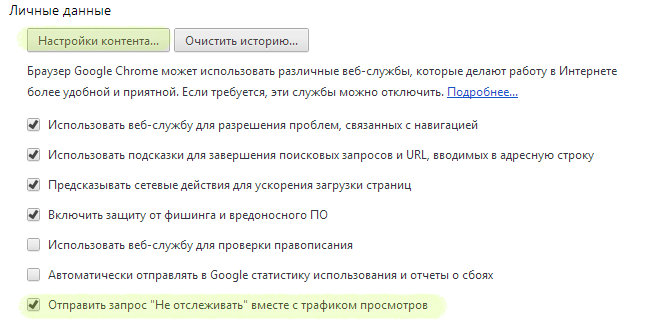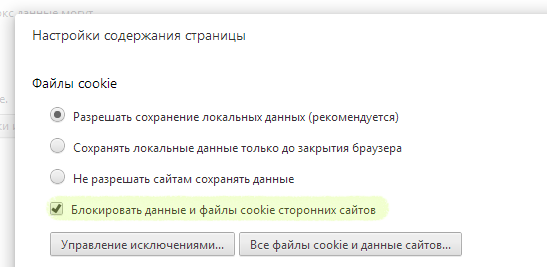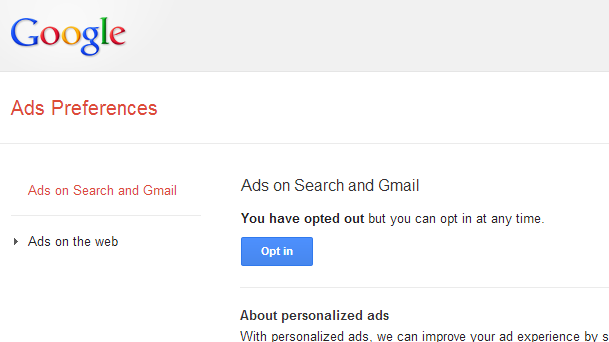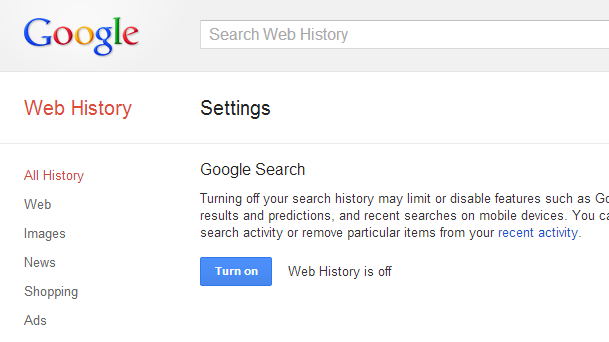We return privacy or big brother watching me on the standard settings. Part 1. Browser and Google services settings
Do you like to watch targeted ads? You do not mind that Facebook itself will mark you on a photo of friends (and it will be seen by strangers)? Do you like to see relevant queries in a search engine? You do not mind your preferences used to advertise products to your friends? You do not care that Google keeps the entire history of your search, and you are not afraid that someone can see it in 10 years (“download Avatar for free without SMS” or “how to avoid tax verification”)? Do you mind that your potential employer or the entire Internet will see your photos and comments if you accidentally become interested in someone?
Then this post will not be of interest to you - I wish you a good day. The post is not blessed by the FSB, various advertising exchanges (hello, Yandex, Tinkoff Digital, etc.) and social services. networks.
If you decide to attend to your privacy, have a minimum of data for compromising and building a psychological and behavioral profile, when you or your parents make some kind of facac and pay attention to the public (or when you succeed and some of the detractors will look for this data) - welcome under the cat with step-by-step instructions for the main programs and networks. Our goal will be to ensure maximum privacy while maintaining maximum ease of surfing. It is clear that if you want to ensure maximum confidentiality, it is better not to use social networks, use different anonymizers, etc., but not everyone agrees to go for it.
')
In this part we will talk about browser settings and google account settings. The following parts will be devoted to the settings of "Facebook", "Contact", as well as specific things in mobile OS on the example of iOS. Any additions are welcome and will be happy to be included in this improvised “manual” (or the next one, if they are about the topics of the next articles).

Browser - your window to the Internet. Many data flow away and is collected through it. Sites that you visit can share information among themselves by leaving you with various cookies (this is the basis of targeted advertising when you are shown cars, if you like to go, for example, to car websites). So let's maximize complicate this behavior.
Since Chrome has become one of the leaders, I’ll bring all the settings for it (you can always find similar ones in your browser). Previously, it is impossible not to say that it is not very reasonable to use the browser of the largest search engine, if your data is important to you, but, I repeat, our goal is to ensure maximum privacy with minimal loss of “comfort” (namely, giving up habits).
As in various sites that write all the unpleasant additional conditions in small print at the bottom of the page, all the settings we need are in the advanced section and opened by clicking on “Show advanced settings” at the bottom of the settings page.
First of all, we will be interested in the section "Personal data":

Here you need a tick to send the Do not track request (“not track”) for all sites that voluntarily agreed to follow this rule, namely, not to follow the actions of the user (it’s a pity that this is only the goodwill of the site owners, and not the obligation to follow this request).
For maximum privacy, it is worthwhile to disable all the rest of the checkboxes, since they somehow send certain information about you to Google, although they were created with an initially good purpose (to add search queries for you, check spelling, take you away from infected sites, correct typos in site names, etc.). However, if you have your own head on your shoulders, keep your ear sharp and own the blind ten-finger method, it will not hurt to get rid of these settings.
Then click here on the button "Content Settings ...".

First, enable third-party data and cookie blocking. There is a certain minus in this: one site will not know the data about another (for example, habrastorage will not allow you to upload a picture, because it will think that you are not logged in), but you can always manually add an exception for a specific site, and, secondly, it will be much more difficult to find out which other sites you go to.
Ideally, you should also put the switch on “save local data only until the browser is closed”. Even more privacy (and protection from intruders who gain access to your computer), however, there will be a lot of inconvenience: every time you re-open your browser, you will need to enter passwords, the goods in the online shopping baskets will not be saved (unless this data is on the store server, and not on your computer in "cookies").
Also scroll down and make sure that your location data is not automatically transmitted to the sites (“Ask if the site is trying to track my location (recommended)”). Similarly for accessing your webcam, microphone, etc.
It is useful to enable the activation of plug-ins only by clicking on the element itself.
An important point is your web history. There is an extensive field for paranoids, but the fact remains: Google did not give the ability to automatically remove items from the web history (for example, all items that are older than a month or a year), unlike, for example, Safari. You can only delete the entire web history through the section “Clear history ...” (clicking on the button will not immediately clear, but will open another window where you can select specific items you want to delete). This behavior entails a loss of convenience in the sense that the story makes it easy to open pages that you used to have (just start writing the name of this site or the title, as the address bar will find this element in your story), so it would be convenient to delete the whole story, and only the one that, for example, is older than a month. But that's okay, you have to go here yourself from time to time and manually clean the entire history (after all, you have all the necessary sites in bookmarks and subscriptions, don't you?). In other words, you will not have any serious inconvenience. Or you can put a special extension No History, which will not store history at all.
Do not forget to also go to the chrome settings on your phone / tablet and turn on the settings “Do not track” (request “do not track”), and also disable “Send Usage Data” (send statistics on usage).
A separate item, not quite related to tracking, go passwords. For example, I really don’t like the fact that anyone who got access to Chrome under Windows can view saved passwords in the settings (they won’t even be asked for a password, unlike, for example, Firefox, where you can set a master password). If you are not against such a scenario (the most harmless, if your password from the mail is stolen in this way by your boyfriend or girlfriend - although, how to say, harmless), you can leave everything as it is. I would still recommend the following scheme for such purposes:
1. For key services (such as mail, payment systems, Internet banks and, for example, Apple ID), come up with complex passwords and keep them in mind, never “remembering” anywhere.
2. Additionally, where possible, enable two-factor authentication (in addition to the password, you need to enter a one-time code from the SMS or a special mobile application), as well as a notification about the entrance to the mail.
3. For everything else, use special programs such as 1Password (key requirements: cross-platform and easy storage of various things). First, once again you will not keep all your eggs in one basket (namely, Google’s passwords), and secondly, even if the master password is gone, you can still recover passwords via mail (after all, The program did not remember). And, of course, you will no longer have the same and simple passwords.
4. Do not store PIN codes and credit card data anywhere (even in such encrypted containers) just just in case.
5. Do not remember the passwords in the browser after this.
6. For any public networks, use a VPN. If the admin has raised your connection to work, you can use it to save money. Or use services like Cloak .
7. Do not enter nonsense in password recovery test questions. More precisely, nonsense, which you are not able to remember. It is important to understand that you do not need to truthfully answer the question “Mother’s maiden name” or “First teacher’s name”, since this information is easily obtained with the help of social engineering. Therefore, it is best for rubbish to work (in the sense of an unevident answer) that you always write, but it will not be possible to get it just by asking someone.
8. Do not make identical passwords. Especially if these are pseudo-different passwords with the same prefix like # FD% gmail and # FD% paypal. If an attacker has a prefix, then the first thing he will try to do is to use it, adding to the name of the site he needs - the pattern is obvious.
9. Buy yourself a laptop and do not use your work computer for personal use (do not go through the sites, do not memorize passwords, etc.). All personal information should only be on your personal devices. Do not forget to put a request to request a password after a short idle time, get into the habit of “blocking” your computer / phone as soon as you stop doing something on it and, if you are not a gamer and you have an SSD, encrypt the entire file system using FileVault / Truecrypt.
10. Make backup, buy yourself at least an external drive for this purpose. For the more lazy, a personal favorite is www.backblaze.com (especially important if you have a Mac and FileVault is enabled -in addition to the encryption service promised, your files will also be encrypted with your own FileVault, while remaining built-in versioning, etc.).
Next, let's go disassemble the settings of specific services.
First of all, we minimize tracking for advertising purposes. To do this, go to www.google.com/ads/preferences and bring it to the following appearance by pressing the opt out buttons and other refusals.
The section Ads on Search and Gmail (ads in search and Gmail) after our manipulations should tearfully ask to take part in the whole orgy:

Similarly, it should be in the section Ads on the web (advertising on web pages):

If the appearance is different, look for the buttons for various opt-out options in these sections. At the same time during the shutdown, you may learn a lot about yourself (for example, to which categories you were assigned during your previous surfing).
Just as the browser remembers which pages you were on, Google, by default, remembers everything you’ve ever searched for. Feel free to go off this behavior in history.google.com/history/settings turning it to the following view:

After that, delete all the information accumulated on you by search queries in history.google.com/history
Go to www.google.com/dashboard and see a list of all the services you've ever used. Methodically go to each and go through the settings / content. Remove unnecessary, block photos in "Picasso", as much as possible depersonilize and limit Google Plus. I think it’s not necessary to say that your profile should be excluded from web search results, maximum photos are deleted, other albums are blocked for non-friends, post visibility is limited (and, ideally, deleted a month after writing). All mail and older than the year to be removed (believe me, you will not reread it, unlike other people, to whom it will suddenly become very interesting when you, for example, run for any political or high position).
Continued.
Then this post will not be of interest to you - I wish you a good day. The post is not blessed by the FSB, various advertising exchanges (hello, Yandex, Tinkoff Digital, etc.) and social services. networks.
If you decide to attend to your privacy, have a minimum of data for compromising and building a psychological and behavioral profile, when you or your parents make some kind of facac and pay attention to the public (or when you succeed and some of the detractors will look for this data) - welcome under the cat with step-by-step instructions for the main programs and networks. Our goal will be to ensure maximum privacy while maintaining maximum ease of surfing. It is clear that if you want to ensure maximum confidentiality, it is better not to use social networks, use different anonymizers, etc., but not everyone agrees to go for it.
')
In this part we will talk about browser settings and google account settings. The following parts will be devoted to the settings of "Facebook", "Contact", as well as specific things in mobile OS on the example of iOS. Any additions are welcome and will be happy to be included in this improvised “manual” (or the next one, if they are about the topics of the next articles).

Browser
Browser - your window to the Internet. Many data flow away and is collected through it. Sites that you visit can share information among themselves by leaving you with various cookies (this is the basis of targeted advertising when you are shown cars, if you like to go, for example, to car websites). So let's maximize complicate this behavior.
Since Chrome has become one of the leaders, I’ll bring all the settings for it (you can always find similar ones in your browser). Previously, it is impossible not to say that it is not very reasonable to use the browser of the largest search engine, if your data is important to you, but, I repeat, our goal is to ensure maximum privacy with minimal loss of “comfort” (namely, giving up habits).
As in various sites that write all the unpleasant additional conditions in small print at the bottom of the page, all the settings we need are in the advanced section and opened by clicking on “Show advanced settings” at the bottom of the settings page.
First of all, we will be interested in the section "Personal data":

Here you need a tick to send the Do not track request (“not track”) for all sites that voluntarily agreed to follow this rule, namely, not to follow the actions of the user (it’s a pity that this is only the goodwill of the site owners, and not the obligation to follow this request).
For maximum privacy, it is worthwhile to disable all the rest of the checkboxes, since they somehow send certain information about you to Google, although they were created with an initially good purpose (to add search queries for you, check spelling, take you away from infected sites, correct typos in site names, etc.). However, if you have your own head on your shoulders, keep your ear sharp and own the blind ten-finger method, it will not hurt to get rid of these settings.
Then click here on the button "Content Settings ...".

First, enable third-party data and cookie blocking. There is a certain minus in this: one site will not know the data about another (for example, habrastorage will not allow you to upload a picture, because it will think that you are not logged in), but you can always manually add an exception for a specific site, and, secondly, it will be much more difficult to find out which other sites you go to.
Ideally, you should also put the switch on “save local data only until the browser is closed”. Even more privacy (and protection from intruders who gain access to your computer), however, there will be a lot of inconvenience: every time you re-open your browser, you will need to enter passwords, the goods in the online shopping baskets will not be saved (unless this data is on the store server, and not on your computer in "cookies").
Also scroll down and make sure that your location data is not automatically transmitted to the sites (“Ask if the site is trying to track my location (recommended)”). Similarly for accessing your webcam, microphone, etc.
It is useful to enable the activation of plug-ins only by clicking on the element itself.
Web Surfing History
An important point is your web history. There is an extensive field for paranoids, but the fact remains: Google did not give the ability to automatically remove items from the web history (for example, all items that are older than a month or a year), unlike, for example, Safari. You can only delete the entire web history through the section “Clear history ...” (clicking on the button will not immediately clear, but will open another window where you can select specific items you want to delete). This behavior entails a loss of convenience in the sense that the story makes it easy to open pages that you used to have (just start writing the name of this site or the title, as the address bar will find this element in your story), so it would be convenient to delete the whole story, and only the one that, for example, is older than a month. But that's okay, you have to go here yourself from time to time and manually clean the entire history (after all, you have all the necessary sites in bookmarks and subscriptions, don't you?). In other words, you will not have any serious inconvenience. Or you can put a special extension No History, which will not store history at all.
"Chrome" for mobile devices
Do not forget to also go to the chrome settings on your phone / tablet and turn on the settings “Do not track” (request “do not track”), and also disable “Send Usage Data” (send statistics on usage).
Passwords, encryption and backup
A separate item, not quite related to tracking, go passwords. For example, I really don’t like the fact that anyone who got access to Chrome under Windows can view saved passwords in the settings (they won’t even be asked for a password, unlike, for example, Firefox, where you can set a master password). If you are not against such a scenario (the most harmless, if your password from the mail is stolen in this way by your boyfriend or girlfriend - although, how to say, harmless), you can leave everything as it is. I would still recommend the following scheme for such purposes:
1. For key services (such as mail, payment systems, Internet banks and, for example, Apple ID), come up with complex passwords and keep them in mind, never “remembering” anywhere.
2. Additionally, where possible, enable two-factor authentication (in addition to the password, you need to enter a one-time code from the SMS or a special mobile application), as well as a notification about the entrance to the mail.
3. For everything else, use special programs such as 1Password (key requirements: cross-platform and easy storage of various things). First, once again you will not keep all your eggs in one basket (namely, Google’s passwords), and secondly, even if the master password is gone, you can still recover passwords via mail (after all, The program did not remember). And, of course, you will no longer have the same and simple passwords.
4. Do not store PIN codes and credit card data anywhere (even in such encrypted containers) just just in case.
5. Do not remember the passwords in the browser after this.
6. For any public networks, use a VPN. If the admin has raised your connection to work, you can use it to save money. Or use services like Cloak .
7. Do not enter nonsense in password recovery test questions. More precisely, nonsense, which you are not able to remember. It is important to understand that you do not need to truthfully answer the question “Mother’s maiden name” or “First teacher’s name”, since this information is easily obtained with the help of social engineering. Therefore, it is best for rubbish to work (in the sense of an unevident answer) that you always write, but it will not be possible to get it just by asking someone.
8. Do not make identical passwords. Especially if these are pseudo-different passwords with the same prefix like # FD% gmail and # FD% paypal. If an attacker has a prefix, then the first thing he will try to do is to use it, adding to the name of the site he needs - the pattern is obvious.
9. Buy yourself a laptop and do not use your work computer for personal use (do not go through the sites, do not memorize passwords, etc.). All personal information should only be on your personal devices. Do not forget to put a request to request a password after a short idle time, get into the habit of “blocking” your computer / phone as soon as you stop doing something on it and, if you are not a gamer and you have an SSD, encrypt the entire file system using FileVault / Truecrypt.
10. Make backup, buy yourself at least an external drive for this purpose. For the more lazy, a personal favorite is www.backblaze.com (especially important if you have a Mac and FileVault is enabled -
Next, let's go disassemble the settings of specific services.
Google account
First of all, we minimize tracking for advertising purposes. To do this, go to www.google.com/ads/preferences and bring it to the following appearance by pressing the opt out buttons and other refusals.
The section Ads on Search and Gmail (ads in search and Gmail) after our manipulations should tearfully ask to take part in the whole orgy:

Similarly, it should be in the section Ads on the web (advertising on web pages):

If the appearance is different, look for the buttons for various opt-out options in these sections. At the same time during the shutdown, you may learn a lot about yourself (for example, to which categories you were assigned during your previous surfing).
Google search history
Just as the browser remembers which pages you were on, Google, by default, remembers everything you’ve ever searched for. Feel free to go off this behavior in history.google.com/history/settings turning it to the following view:

After that, delete all the information accumulated on you by search queries in history.google.com/history
Other Google services
Go to www.google.com/dashboard and see a list of all the services you've ever used. Methodically go to each and go through the settings / content. Remove unnecessary, block photos in "Picasso", as much as possible depersonilize and limit Google Plus. I think it’s not necessary to say that your profile should be excluded from web search results, maximum photos are deleted, other albums are blocked for non-friends, post visibility is limited (and, ideally, deleted a month after writing). All mail and older than the year to be removed (believe me, you will not reread it, unlike other people, to whom it will suddenly become very interesting when you, for example, run for any political or high position).
Continued.
Source: https://habr.com/ru/post/173461/
All Articles